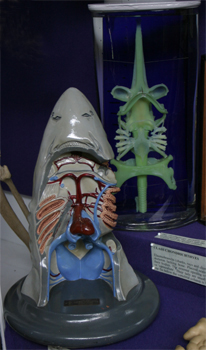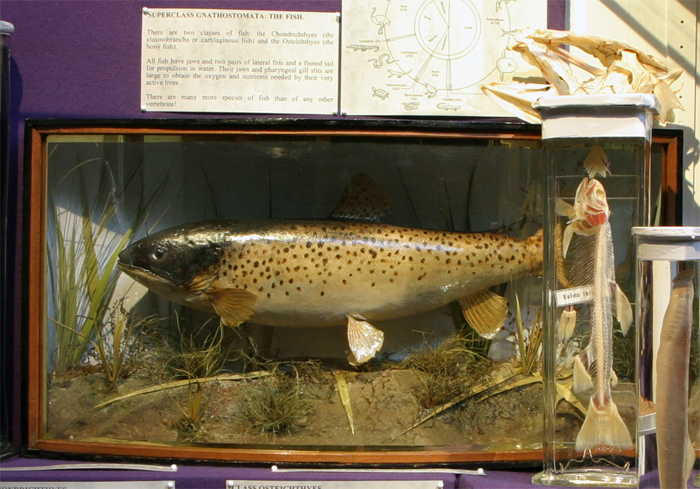
FISH | |
CLASS CEPHALASPIDOMORPHI: LampreysThe jawless lampreys have primitive chordate features such as a notochord, gill openings and metamerically segmented muscles. A cartilaginous cranium protects the brain and vertebrae protect the nerve cord. They have elongate bodies propelled by fins.  |
|
JAWED FISHThere are two classes of living fish with jaws: the Chondrichthyes (the cartilaginous fish or elasmobranchs) and the Osteichthyes (the bony fish). Both classes of fish have two pairs of lateral fins and a finned tail for propulsion in water. Their jaws and pharyngeal gill slits are large to obtain the oxygen and nutrients needed by their very active lives. The two classes of fish contain more living species than any other class of vertebrates! Members of two other early Classes – the placoderms and acanthodians – are now extinct. | |
|  |

| |
FISH BRAINS Top Left: Salmon brain (Class Osteichthyes) The lamprey's simple brain has large olfactory lobes showing how a sense of smell must dominate its life. The brains of cartilaginous fish, like the dogfish, and bony fish, like the salmon, have large olfactory bulbs. Compared to lamprey brains, fish brains show a much greater development of the optic lobes and cerebellum, which are concerned with vision and balance respectively. | |






